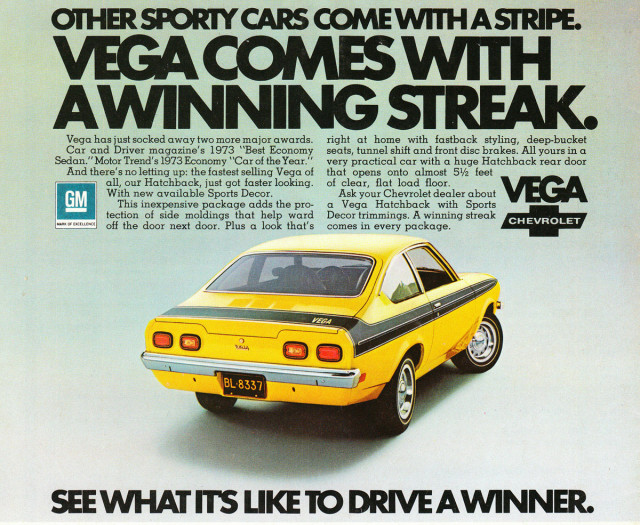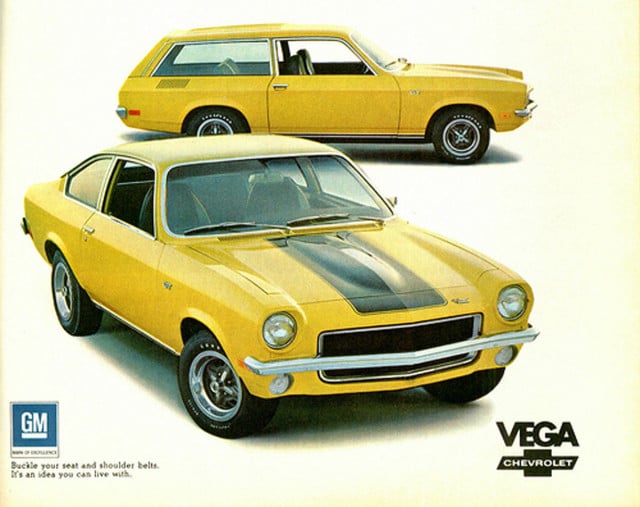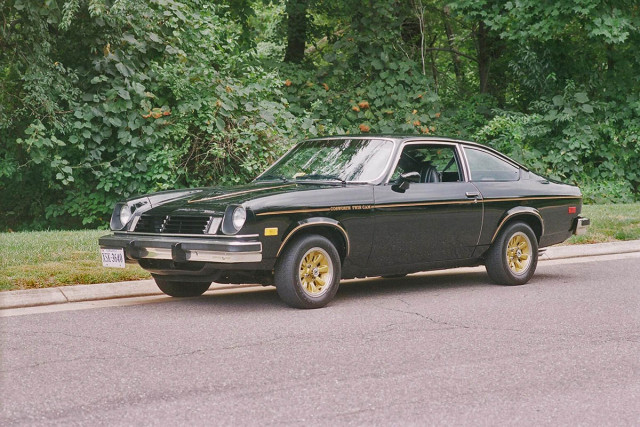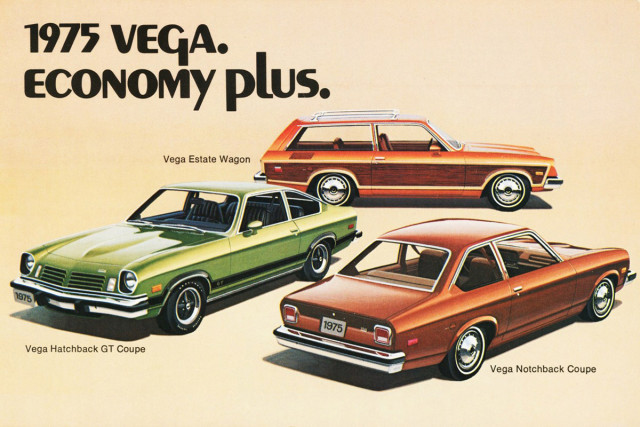It was no secret in the mid 1960s that Chevrolet was working on small car platform. Edward Cole, GM’s Executive Vice-President of Operating Staffs, was working on his own small-car project with corporate engineering and design. He presented his team’s program to GM’s president in 1967, and management made the decisions to develop the car, and enter the small car market. 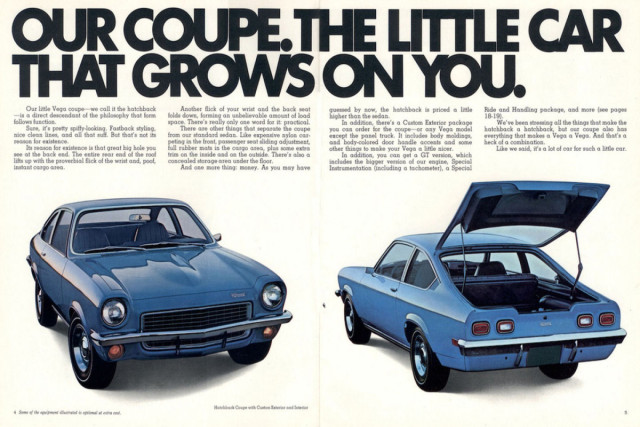 In case you’re wondering what car we are talking about, It’s the Chevrolet Vega—the car that everyone seems to love to hate.
In case you’re wondering what car we are talking about, It’s the Chevrolet Vega—the car that everyone seems to love to hate.
In 1968, GM Chairman James Roche announced Chevrolet would produce the new car within two years. From its inception, the Vega was destined to use a newly developed all-aluminum die-cast engine-block. Considering the size of the car, a relatively large displacement engine with good low-end torque was planned. The four cylinder aluminum-block engine was a joint effort between General Motors, Reynolds Metals, and Sealed Power Corporation.
The car launched as a 1971 model, as production began on June 26, 1970. The first-year Vega received major accolades when it was introduced, including 1971 Motor Trend Car of the Year. Unfortunately, the car actually had a long list of problems related to its engineering, reliability, safety, propensity to rust, and engine durability. With a lengthy series of recalls and upgrades, the Vega’s faults tarnished General Motors’ reputation.
For 1973, a new exterior and 5-mph front bumpers were standard. Also this year, a US-built Saginaw manual transmission replaced the previous Opel-sourced units. On May 17, 1973, the millionth Vega left the Assembly plant. A limited-edition Millionth Vega was introduced celebrating the milestone car. It came with orange carpeting and Millionth Vega door handle accents. There were 6,500 built.
For 1974, the major exterior changes were a revised front end and the addition of a 5-mph rear bumper. A slanted front grill panel with recessed headlamp bezels, and a louvered steel grill replaced the egg-crate plastic grille. Aluminum bumpers replaced the chrome ones, and a revised rear panel used larger single-unit taillights. In February the “Spirit of America” limited-edition hatchback was introduced. The car featured a white exterior, white vinyl roof, blue and red stripes on body sides and hood and rear-end panel, and special emblems on the front fenders and rear panel.
In March of 1975, the Cosworth Vega was introduced with an all-aluminum engine and electronic fuel injection.
In 1976, a facelift included a revised header panel, a wider grill with revised headlamp bezels, and new tri-color taillights (although the amber turn signals were nonfunctional). The chassis received upgraded parts from the Monza, including a box-section front cross-member, larger front and rear brakes, and a torque-arm rear suspension. Extensive anti-rust improvements to the body included galvanized fenders and rocker panels. New options included a BorgWarner five-speed manual overdrive transmission, a Sky Roof with tinted sliding glass, and an 8-track tape player. The Cosworth was canceled in July after 1,446 1976 models were built.
When 1977 arrived, so did the end of the line for Vega. With this the final year, the writing was on the wall, and Vega and minimal changes were made before production ceased.
The Bad-Ass Vega!
Baldwin Motion was actually a partnership between Long Island, New York’s Baldwin Chevrolet and Joel Rosen’s Motion Performance speed shop. In 1971, the company started modifying the Vega, and Motion V-8 Super Vegas could be ordered with either a naturally aspirated, turbocharged, or supercharged 350 cubic-inch small-block. But if you really wanted a monster, a carbureted (single or dual quad) 427 or 454 big-block V-8 was also an option. 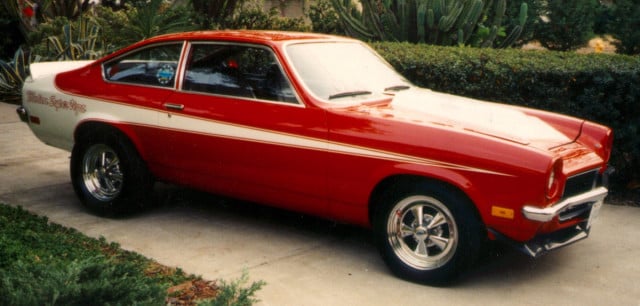 Neither Baldwin Chevrolet nor its successors supported Rosen’s Vega program. The 454ci-powered cars were capable of running a 9-second 1/4-mile. The Environmental Protection Agency went after Motion Performance in 1974, and forced them to stop selling these modified street cars. Joel Rosen was presented with a Cease and Desist order from the EPA (to halt the building of new cars with powertrains not available from the factory), that was executed by the Department of Justice. It meant that if Motion Performance did not cease production of new specialty vehicles, it would be fined $10,000 per emission device removed in the build process. This translated to $50,000 in fines for each V-8 Vega! Rosen settled with Uncle Sam in 1975, paying a $500 fine and agreeing to the terms outlined in the EPA documents.
Neither Baldwin Chevrolet nor its successors supported Rosen’s Vega program. The 454ci-powered cars were capable of running a 9-second 1/4-mile. The Environmental Protection Agency went after Motion Performance in 1974, and forced them to stop selling these modified street cars. Joel Rosen was presented with a Cease and Desist order from the EPA (to halt the building of new cars with powertrains not available from the factory), that was executed by the Department of Justice. It meant that if Motion Performance did not cease production of new specialty vehicles, it would be fined $10,000 per emission device removed in the build process. This translated to $50,000 in fines for each V-8 Vega! Rosen settled with Uncle Sam in 1975, paying a $500 fine and agreeing to the terms outlined in the EPA documents.



